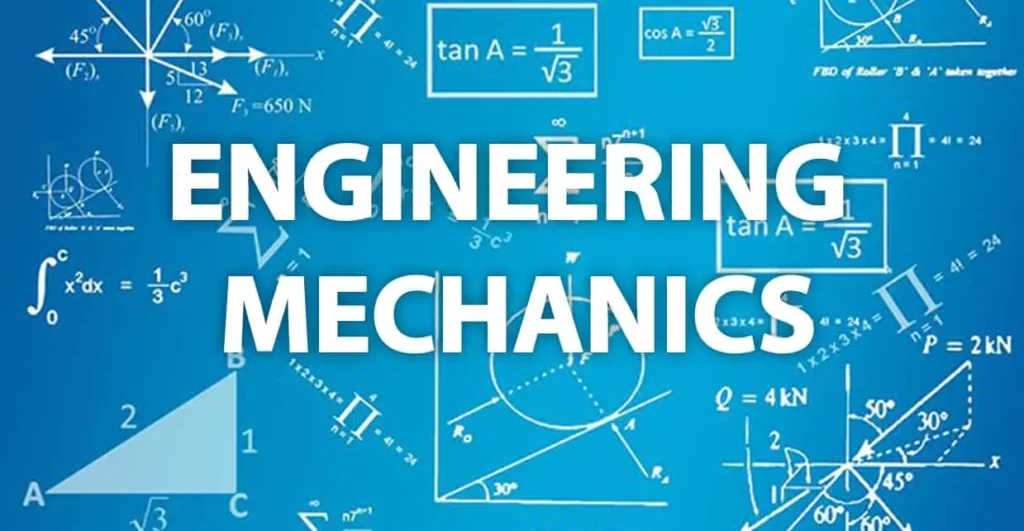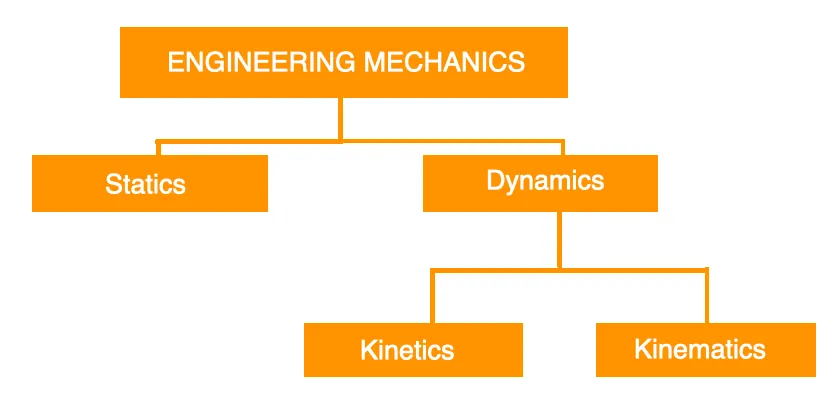
Engineering mechanics is a branch of science, that deals with the laws and principles of Mechanics, along with their applications to engineering problems. As a matter of fact, knowledge of Engineering Mechanics is very essential for an engineer in planning, designing, and constructing various types of structures and machines. In order to understand the problem and solve the task skillfully manner, every engineer must study Engineering Mechanics in a systematic and scientific manner.

Static
Statics deals with the forces and their effects on the machine parts at which these machine parts are at rest. The mass and the inertia forces of the parts are assumed to be negligible.
Dynamic
Dynamics deals with the forces and their effects while acting upon the machine parts in motion.
- Kinetics: This study of kinetics deals with the inertia forces which arise from the combined effect of the mass and the motion of the machine parts.
- Kinematics: This study of kinematics deals with the relative motion between the various parts of the machines.
History of Engineering Mechanics
As I Have mentioned the first step in understanding engineering was the discovery of a circular wheel, which led to the use of animal-driven carts. The study of the ancient civilization of Babylonians, Egyptians, Greeks, and Roman reveals the use of water wheels and windmills even during the pre-historic days.
- It is believed that the word ‘Mechanics’ was coined by the Greek philosopher Aristotle (384–322 BC).
- Aristotle used this word for the problems of the lever and the concept of center of gravity.
- At that time, it included a few ideas, which were odd, unsystematic and based mostly on observations containing incomplete information.
- The first mathematical concept of this subject was developed by Archimedes (287–212 BC).
First Study on Motion of body
- In the period 1325–1350, a group of scientists led by the Thomas Bradwardene of Oxford University did a lot of work on the plane motion of bodies.
- Leonardo Da Vinci (1452–1519), a great engineer and painter, gave many ideas in the study of the mechanism, friction, and motion of bodies on inclined planes.
- Galileo (1564–1642) established the theory of projectiles and gave a rudimentary idea of inertia.
- Huyghens (1629–1695) developed the analysis of the motion of a pendulum.
First Conceptof Force and Mass (Laws of Motions)
- As a matter of fact, the scientific history of Engineering Mechanics starts with Sir Issac Newton (1643–1727).
- Sir Issac Newton introduced the concept of force and mass and gave Laws of Motion in 1686.
- James Watt introduced the term horsepower for comparing performance of his engines.
- John Bernoulli (1667–1748) enunciated the priciple of virtual work.
- In eighteenth century, the subject of Mechanics was termed as Newtonian Mechanics.
- A further development of the subject led to a controversy between those scientists who felt that the proper measure of force should be change in kinetic energy produced by it and those who preferred the change in momentum.
- In the nineteenth century, many scientists worked tirelessly and gave number of priciples, which enriched the scientific history of the subject.
Books
- Engineering Mechanics by R.K.Bansal
- Engineering Mechanics by R.S.Khurmi
